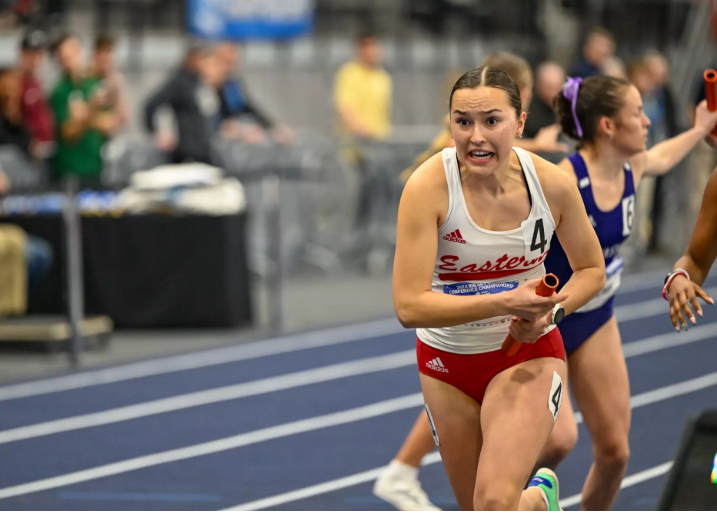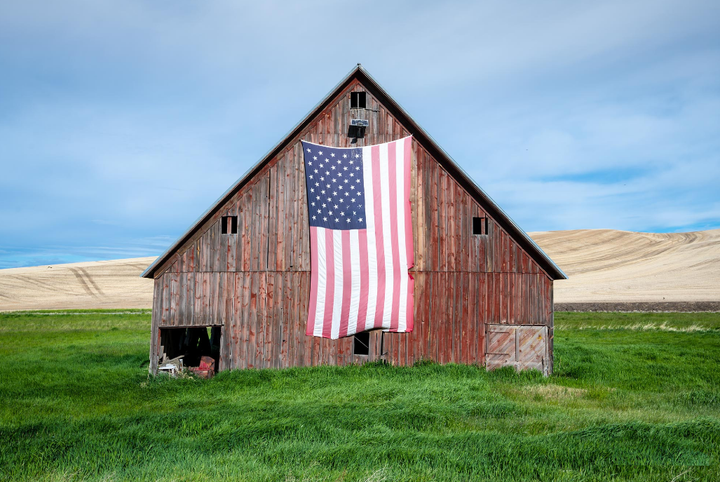College Reform Plan Could Collapse Washington State Athletics

A Small‑School Athlete on the Bubble
Rhiannon Davies doesn’t run for national headlines. As a junior psychology major at Eastern Washington University, she competes in cross-country and track, where she recently set a personal best in the 5K at the Lewis-Clark State Invite. Davies, like a few thousand other student-athletes across Eastern Washington, balances academics, athletics, and financial uncertainty in a college sports ecosystem that offers little fame, but a great deal of opportunity.
That opportunity may be at risk. A sweeping new bill from Representative Michael Baumgartner (R-WA) seeks to overhaul college sports by significantly weakening or replacing the NCAA with a federally managed oversight commission.
While the Congressman claims the bill is about fairness and integrity, its structure could devastate programs like the ones Davies competes in. These are programs that aren’t televised, don’t generate revenue, and yet offer access, scholarships, and purpose to student-athletes across rural Washington.
Baumgartner’s Bill: A Federal Overhaul of College Sports
The Collegiate Sports Reform and Equity Act, introduced by Rep. Baumgartner on April 7, includes mandatory NIL (Name, Image, and Likeness) revenue-sharing across all athletes, spending caps, and uniform federal standards for athlete compensation.
Baumgartner, speaking at a House Judiciary Committee hearing on June 4, said the bill would “restore fairness, integrity, and accountability” to college athletics. “The era of the NCAA favoring big brands while sidelining small schools is over,” he told the committee.
But critics say the bill, far from protecting small schools, could accelerate their collapse. This is particularly true in lower-visibility conferences like the Big Sky, where schools like EWU compete. Further, sports experts say the bill will discourage companies from making NIL deals with student athletes and their schools.
Who It Hurts in WA‑5
At Eastern Washington University, athletic programs operate on a fragile balance. Football and men’s basketball generate most of the limited revenue, which in turn helps fund cross-country, tennis, volleyball, and track. Mandated equal revenue-sharing, especially in a setting without TV contracts, would likely force painful choices.
“It’s going to be really hard to regulate student-athletes to restrictions that other students or the adults in the room aren’t subject to,” said EWU Athletic Director Tim Collins in an interview with SWX Local Sports. Eastern Washington University, like many regional institutions, already faces financial pressures that leave little margin for compliance costs or legal challenges tied to federal NIL regulations.
At Whitworth University, a private D-III institution in Spokane, athletic programs do not offer scholarships and are not built on media exposure. New federal compliance requirements, even if well-intended, could overwhelm the school’s capacity. Whitman College in Walla Walla, an academically prestigious liberal arts college, faces a different but parallel threat. Compliance with federal Title IX gender equality mandates could clash with revenue rules, leading to cuts in women’s sports or legal uncertainty if the framework isn’t carefully constructed.
Policy Critique: Who Loses, and Why
Baumgartner frames the bill as a fairness fix, sharing income more evenly among athletes. But most college athletes, especially those in WA-5, don’t play in markets with TV revenue or million-dollar contracts. For them, equal distribution of imaginary money means cutting existing services to fund a promise that doesn’t apply to them.
If revenue-sharing is enforced without exemptions, non-revenue sports will suffer. This is already happening. In anticipation of financial fallout from NCAA legal settlements, some schools have preemptively cut walk-on athletes. One of them, Jake Rimmel, told AP News that he lost his position not because of performance, but because his program couldn’t afford to carry him under a shifting compensation model.
That kind of ripple effect could soon hit Cheney, Spokane, or Walla Walla.
At Whitman and Whitworth, where retention, mental health, and academic engagement are directly tied to athletic participation, the risk is existential. These schools cannot compete with Big Ten budgets, but they play an outsized role in educating students from rural, lower-income, and first-generation backgrounds.
An Empty Bill and a Plea to Trump
When Rep. Baumgartner introduced the Restore College Sports Act on April 7, 2025, he accompanied it with something highly unusual. A same-day press release urging former President Donald Trump to enact the bill’s ideas via executive order.
That alone was a break from legislative norms. But what happened next, or didn’t, was even more telling. Not a single member of Congress signed on as a co-sponsor. As of June 10, the bill has zero backers in either party, not even among fellow Republicans on the House Judiciary Committee.
In modern congressional politics, especially for a member of the majority party, a bill with no co-sponsors is almost unheard of. Legislative proposals, even symbolic ones, typically attract support from allies, caucus mates, or regional colleagues. But Baumgartner’s sweeping NCAA overhaul, with its federal salary caps, revenue-sharing mandates, and nationalized oversight commission, found no takers.
This legislative void casts Baumgartner’s executive order appeal in a new light. Not as a show of strength, but as a sign of political isolation. Without allies in Congress and with his proposal stalled before it left the gate, the Trump White House has become both stage and fallback plan.
In a June 9 follow-up release, Baumgartner doubled down. “President Trump can step in to save college sports today. My Restore College Sports Act is the roadmap, with fair revenue-sharing, rationalized conferences, and reasonable student compensation.”
That pivot carries its own implications. Rather than persuading lawmakers through committee process or building a bipartisan reform effort, Baumgartner appears to be betting on executive action as a lifeline, an attempt to salvage an agenda that never found a foothold on Capitol Hill.
For schools in Eastern Washington, the stakes are real. But the path Baumgartner has chosen, sidestepping Congress and seeking top-down intervention, raises hard questions about whose interests are being served, and how decisions that affect local institutions will ultimately be made.
A Scholarship Lost?
Rhiannon Davies hasn’t been quoted in national NIL debates. She’s too busy racing up hills, studying for finals, and representing her university on courses that don’t see cameras or sponsorships. Her presence on the team isn’t about exposure. It’s about belonging, structure, and access.
Across WA‑5, student-athletes like Davies keep showing up, even as the rules change beneath their feet. Rep. Baumgartner’s bill was meant to announce that he had arrived; a signature move to stake his claim on the national stage. But with the legislation faltering, its survival now seems to hinge not on congressional support, but on the faint hope of a Trump Executive Order to bail it out.
If “equity” means equal payout but unequal survival, and if the effect of reform is to collapse the very programs that sustain rural athletes, then fairness isn’t what’s being delivered.
It’s sacrifice.


